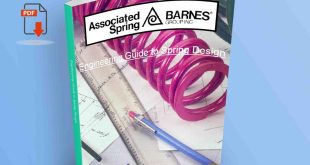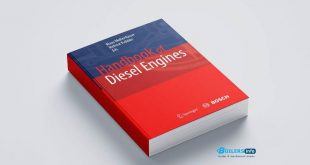Troubleshooting Rotating Machinery
Rotating machinery is critical to many industrial and commercial operations, from pumps and motors to compressors and turbines. When problems arise, identifying the cause quickly can save time, money, and avoid further damage to the equipment. Troubleshooting rotating machinery requires a combination of knowledge, experience, and systematic methods to ensure optimal performance. This article explores key aspects of troubleshooting, common machinery failure modes, diagnostic techniques, and real-world examples to help ensure effective maintenance and repair.

Table of Contents
ToggleTroubleshooting for Fun and Profit
Troubleshooting rotating machinery can be both challenging and rewarding. By accurately diagnosing issues, technicians can reduce downtime, improve operational efficiency, and extend the lifespan of the equipment. For businesses, efficient troubleshooting translates into cost savings and greater productivity. Whether for personal satisfaction or professional gain, effective troubleshooting enables one to turn problems into opportunities, leading to improved performance and reduced long-term operational costs.
Machinery Design Issues and Failure Modes
Before diving into troubleshooting, it is essential to understand machinery design and potential failure modes. Rotating machinery is designed to convert energy into mechanical motion, typically by turning a shaft that drives other components. However, design flaws or poor maintenance can lead to several failure modes, including:
- Bearing Failures: Bearings are essential components that support rotating parts. Failures may result from insufficient lubrication, misalignment, or excessive loads.
- Imbalance: Imbalanced machinery can lead to excessive vibration, uneven wear, and eventually failure.
- Misalignment: Misalignment between connected components like shafts and gears can cause uneven stress and premature wear.
- Seals and Gaskets: Worn or damaged seals can lead to fluid leaks, affecting lubrication and cooling systems.
Understanding these failure modes helps technicians narrow down the potential causes of problems when diagnosing rotating machinery.
Machinery in Process Services
Rotating machinery is particularly vital in process industries, where it plays a role in fluid transport, energy generation, and manufacturing processes. In these settings, failures can result in costly disruptions to production lines and service downtime. Identifying the root cause of a problem quickly can help minimize the impact on overall operations. Regular inspection and maintenance can also prevent problems from occurring in the first place.
For example, in a pump system, improper installation or maintenance can lead to cavitation, causing damage to the pump’s components and reducing efficiency. In a compressor, issues such as overheating or contamination can cause performance drops and failures.
Who Knows the Most About the Problem?
When troubleshooting, it’s vital to identify who has the most knowledge about the issue at hand. Operators, technicians, and engineers all bring valuable insights into the problem. Often, the operator who regularly uses the machinery is the first to notice when something isn’t functioning properly. By involving all relevant parties—those closest to the equipment and those who designed or maintain it—technicians can gather different perspectives to understand the problem fully.
Where Do the Symptoms Show Up?
The location of symptoms can provide valuable clues about the underlying issue. For example, excessive vibration may indicate an imbalance or misalignment, while overheating may suggest a problem with lubrication or electrical systems. Understanding where the symptoms appear allows the technician to narrow down the possible failure points and focus on the most likely causes.
Symptoms may show up in various ways:
- Noise: Unusual sounds, like grinding or rattling, may indicate mechanical issues, such as damaged bearings or misalignment.
- Heat: Excessive heat can signal lubrication issues, bearing failure, or electrical malfunctions.
- Vibration: Abnormal vibration often points to issues like imbalance, misalignment, or worn-out bearings.
By identifying where the symptoms occur, the technician can better focus their efforts on specific components that are most likely to be at fault.
Why Is the Problem Occurring?
Understanding why the problem is happening is crucial for effective troubleshooting. It’s not just about fixing the immediate symptoms but addressing the root cause to prevent recurrence. Issues can arise due to various factors:
- Improper Installation: If machinery isn’t aligned or set up correctly, it can lead to premature wear and failure.
- Poor Maintenance Practices: Neglecting routine maintenance tasks, like lubrication or alignment checks, can lead to problems down the road.
- Wear and Tear: Over time, rotating machinery naturally degrades due to constant use. Lack of timely repairs or replacements can exacerbate the issue.
- External Factors: External forces, like power surges, temperature fluctuations, or contamination, can also contribute to machinery failure.
By conducting a thorough analysis, the technician can identify why the problem is occurring and prevent future breakdowns.
Analyze, Test, Act, and Confirm
A systematic approach is essential for troubleshooting rotating machinery. The “Analyze, Test, Act, and Confirm” method helps technicians identify the problem and verify that the solution has been effective.
- Analyze: Review the symptoms and gather all available data, including performance logs, machine history, and operator input. Analyze the root cause using diagnostic tools and techniques.
- Test: Conduct tests to confirm the diagnosis. This might include using vibration analysis tools, thermography, or ultrasonic testing to assess the condition of the machinery.
- Act: Perform the necessary repairs, adjustments, or replacements based on the diagnosis.
- Confirm: After repairs are completed, confirm that the problem has been resolved by running the machinery and checking for any recurrence of symptoms.
This approach ensures a thorough and methodical process for identifying and solving issues.
Real-World Examples
Real-world examples provide valuable insight into troubleshooting strategies for rotating machinery. For example, in a manufacturing plant, a motor-driven conveyor system started experiencing vibrations. Upon inspection, technicians discovered that the motor was misaligned with the conveyor belt, causing excessive wear on both the motor and the belt. After realigning the motor, the vibrations ceased, and the system returned to normal operation.
In another case, a pump in a chemical plant failed repeatedly due to cavitation. The root cause was identified as a blockage in the inlet pipe, which restricted the flow of fluid to the pump. Once the blockage was cleared and the pump was recalibrated, the problem was resolved.
These examples highlight the importance of thorough diagnostics and the benefits of addressing the root causes of machinery failures.
Vibration Analysis
Vibration analysis is one of the most effective diagnostic tools in troubleshooting rotating machinery. It helps detect problems like imbalance, misalignment, or bearing wear before they cause significant damage. Vibration sensors can measure the frequency and amplitude of vibrations in machinery components, allowing technicians to pinpoint specific issues.
Regular vibration analysis allows maintenance teams to track the health of equipment and identify potential failures early, preventing costly breakdowns and extending the life of machinery. By comparing current vibration data to baseline measurements, technicians can quickly detect any deviations and take corrective action.
Managing Critical Machinery Vibration Data
Managing vibration data is crucial for the long-term health of rotating machinery. Advanced vibration monitoring systems allow for continuous data collection, which can be stored and analyzed over time. This historical data helps identify patterns and predict potential failures based on trends.
Effective management of vibration data includes setting thresholds for acceptable vibration levels and establishing alarms for when these thresholds are exceeded. By continuously monitoring and analyzing this data, maintenance teams can prioritize repairs, plan downtime, and improve overall equipment reliability.
The Field Troubleshooting Process
The field troubleshooting process is an essential part of any machinery maintenance program. When a problem occurs in the field, technicians must respond quickly and efficiently. The troubleshooting process typically involves several key steps:
- Initial Assessment: Gather information from operators and conduct a visual inspection to understand the problem.
- Diagnostics: Use tools like vibration analyzers, infrared thermography, and pressure gauges to assess the condition of the machinery.
- Repairs: Once the problem is diagnosed, perform the necessary repairs or adjustments.
- Testing: After the repairs are completed, test the machinery to ensure that the issue has been resolved and the equipment is functioning correctly.
By following a structured troubleshooting process, technicians can minimize downtime and maximize the efficiency of rotating machinery.
Conclusion
Troubleshooting rotating machinery is a critical skill that requires a blend of technical knowledge, systematic processes, and real-world experience. By understanding common failure modes, using diagnostic tools like vibration analysis, and following structured troubleshooting methodologies, technicians can quickly identify and resolve issues. Effective troubleshooting not only extends the life of machinery but also ensures smoother operations, reduced downtime, and increased profitability for businesses. By taking a proactive approach to maintenance and troubleshooting, industries can keep their rotating equipment running efficiently for years to come.
 Boilersinfo Boiler and Mechanical Power Digital Library
Boilersinfo Boiler and Mechanical Power Digital Library





